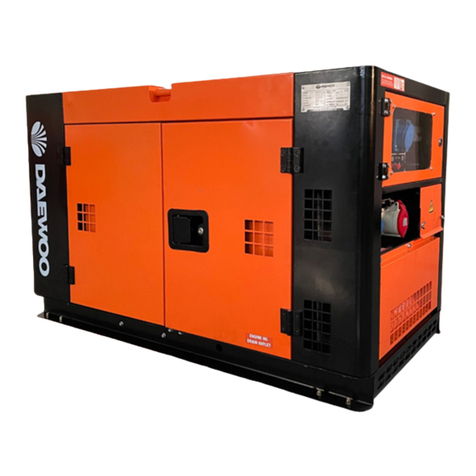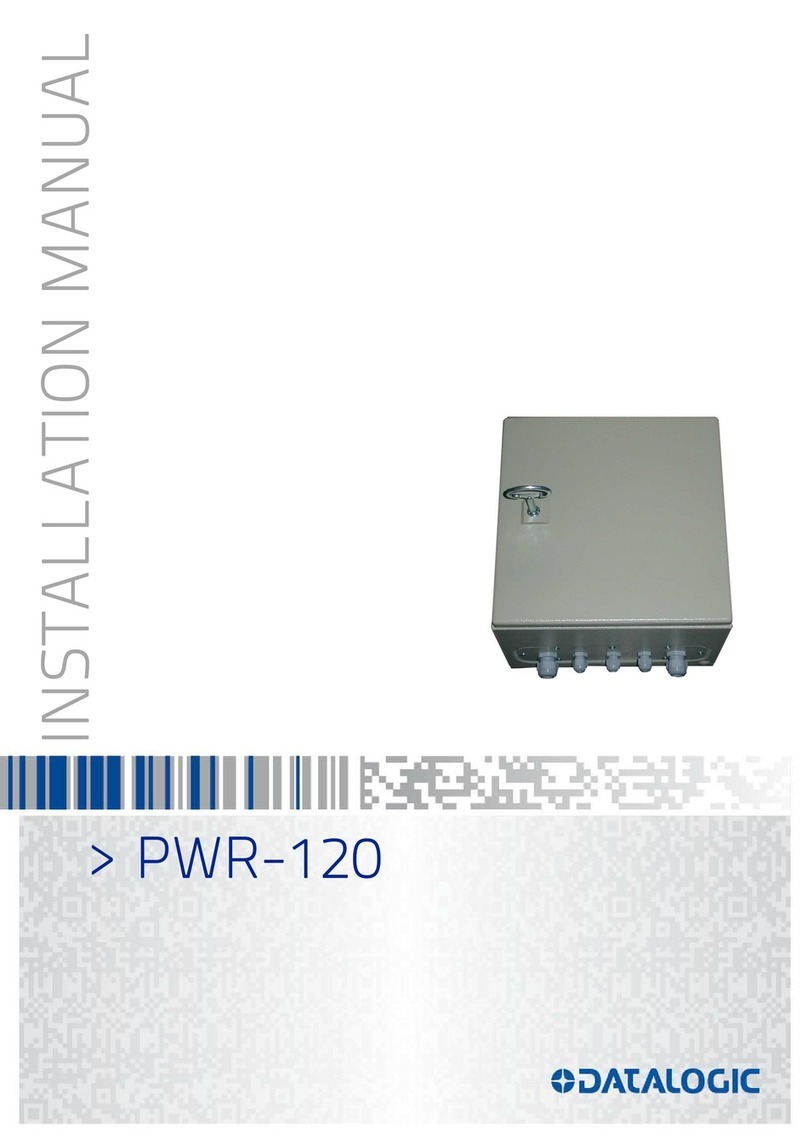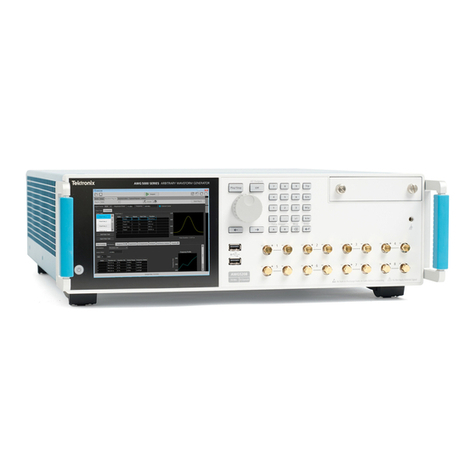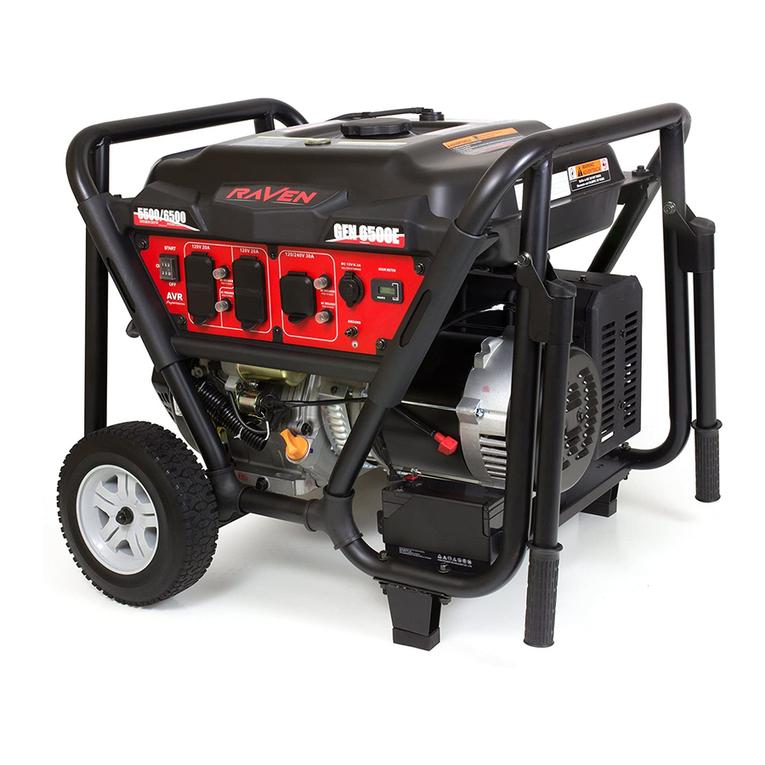Teknoware TKT66 User manual

VOT1E
TKT66 TAPSA CONTROL CENTRAL BATTERY UNIT
FOR EMERGENCY LIGHTING
Installation and maintenance instructions
Made In Finland

VOT1; Rev 1.5; EN; 5.11.2015
TKT66 –Installation and maintenance
2
Table of contents
Table of contents ................................................................................................................... 2
1. Safety instructions ............................................................................................................. 4
2. Package contents and storing ............................................................................................. 4
2.1 Contents of package...................................................................................................................... 4
2.2 Storing .......................................................................................................................................... 4
3. Product description............................................................................................................ 5
3.1 Manufacturer................................................................................................................................ 5
3.2 Terminology.................................................................................................................................. 5
3.3 Type.............................................................................................................................................. 5
3.4 Explanation of letters (in previous models) ................................................................................... 5
3.5 List of optional features................................................................................................................. 6
3.6 General description....................................................................................................................... 6
3.7 Technical specifications................................................................................................................. 7
3.8 Directives and standards............................................................................................................... 8
4. Description of operations ................................................................................................. 10
4.1 Purpose of the central battery unit.............................................................................................. 10
4.2 Circuit outputs............................................................................................................................ 10
4.3 Circuit board settings.................................................................................................................. 10
4.4 Parallel connection of output circuits.......................................................................................... 10
4.5 Control unit................................................................................................................................. 11
4.5.1 Individual luminaire monitoring test with basic settings.................................................................................. 11
4.5.2 Circuit monitoring luminaire test with basic settings....................................................................................... 11
4.6 Operation of central battery unit ................................................................................................ 12
4.7 Normal Status ............................................................................................................................. 12
4.8 Central module panel.................................................................................................................. 13
4.9 Control Module panel luminaire monitoring LED’s and menu settings ...................................... 15
4.10 Control Module panel test functions and alarms....................................................................... 21
4.12 Buttons...................................................................................................................................... 23
5. System planning and installation...................................................................................... 24
5.1 System planning.......................................................................................................................... 24
5.1.1 Luminaire-specific addressable monitoring ..................................................................................................... 24
5.1.2 Circuit monitoring............................................................................................................................................ 24
5.2 System installation ...................................................................................................................... 24
5.2.1 Parts layout....................................................................................................................................................... 26
5.2.2 Circuit wiring in parallel connection................................................................................................................ 27
5.2.3 DIP switch settings in circuit boards................................................................................................................ 28
5.3 Commissioning............................................................................................................................ 29
5.3.1 Setting of battery capacity................................................................................................................................ 29

VOT1; Rev 1.5; EN; 5.11.2015
TKT66 –Installation and maintenance
3
5.3.2 Forced charging of batteries............................................................................................................................. 30
5.3.3 Checking the luminaire circuits one at a time .................................................................................................. 30
5.3.4 Configuration ................................................................................................................................................... 30
6. Maintenance.................................................................................................................... 31
6.1 Replacing the batteries................................................................................................................ 31
7. Disposal........................................................................................................................... 32
8. Optional Features............................................................................................................ 32
8.1 LCD display functions................................................................................................................. 32
8.1.1 Button functions ............................................................................................................................................... 32
8.1.2 LCD content..................................................................................................................................................... 33
8.1.3 LCD menu tree................................................................................................................................................. 33
8.1.4 Test history....................................................................................................................................................... 33
8.1.5 Battery test history ........................................................................................................................................... 34
8.1.6 Error log ........................................................................................................................................................... 35
8.1.7 Setup................................................................................................................................................................. 35
8.1.8 External USB connection................................................................................................................................. 36
8.2 Printer......................................................................................................................................... 37
8.2.1 Language selection of the printer (TKT66xxC(N)D(L)) or optional feature TST6631.................................... 37
8.2.2 Printing out test reports .................................................................................................................................... 37
APPENDIX 1: Report Layout.............................................................................................. 38
APPENDIX 2: Mechanical dimensions................................................................................. 39
APPENDIX 3: Connection alternatives for batteries ............................................................ 41
APPENDIX 4: Circuit diagram with 1-phase input and BCM connection............................. 42
APPENDIX 5: Circuit diagram with 3-phase input .............................................................. 49
APPENDIX 6: Central battery unit main diagram, 1-phase.................................................. 62
APPENDIX 7: Central battery unit main diagram, 3-phase.................................................. 63
APPENDIX 8: Menu selections............................................................................................ 64
© Copyright 2014 Teknoware Oy –We reserve the right to make modifications without notice

VOT1; Rev 1.5; EN; 5.11.2015
TKT66 –Installation and maintenance
4
1. Safety instructions
Read before installing the product.
This manual contains important information that must be followed during the installation and maintenance of
the central battery unit and the batteries. Installation of this device is allowed only to a person who has the
required permissions and qualifications.
National regulations for electric installations and building codes must be observed in the placing of the central
battery unit.
In the installation of batteries, constituted regulations must be observed.
WARNING
There is always dangerous voltage level in the output circuits and inside the central battery unit if
the central battery unit is switched ON. Chancing the main switch to 0 –position will NOT make
the central battery unit de-energized. The central battery unit and the battery housing can be
opened only by electrically skilled person.
Device must be made de-energized before any maintenance or repair work. Remove the battery
fuses and set the main switch to OFF position.
2. Package contents and storing
2.1 Contents of package
The package contains a central battery unit of TKT66XXCxxxx series.
Store the package sheltered from the rain.
Do not place anything on top of the package.
NOTE: The package may contain closed lead acid batteries that contain large quantities of energy and
may short circuit, if stored inappropriately. This must be considered when storing the package.
2.2 Storing
If you do not install the unit and batteries immediately, note the following:
Store the unit in a dry place, protected from humidity.
Store the unit and the batteries in the recommended storing temperature of +10 –30C.
If the batteries are stored for a longer period of time, they must be recharged every 6 months
for at least 12 hours at a time.

VOT1; Rev 1.5; EN; 5.11.2015
TKT66 –Installation and maintenance
5
3. Product description
3.1 Manufacturer
Teknoware Oy
Ilmarisentie 8
FI-15200 Lahti
FINLAND
http://www.teknoware.fi/
3.2 Terminology
Term
Explanation
Control
Automatic testing
Maintained
Continuously active
Non-maintained
Active only during voltage interruptions
3.3 Type
Model
Maximum number of circuits
Input Voltage
TKT6608C(N)(P)xx
8
220-240 VAC 50/60Hz 1~
TKT6616C(N)(P)xx
16
220-240 VAC 50/60Hz 1~
TKT6624C(N)(P)xx
24
220-240 VAC 50/60Hz 1~
TKT6608C(N)(P)xxF
8
N/PE 220-240 VAC 50/60Hz 3~
TKT6616C(N)(P)xxF
16
N/PE 220-240 VAC 50/60Hz 3~
TKT6624C(N)(P)xxF
24
N/PE 220-240 VAC 50/60Hz 3~
3.4 Explanation of letters
Letter
Explanation
F
3-phase input
C only
Control function
CD
Control and printer
CL
Control and LCD display
CO
Control and LON interface
CDL
Control, printer, and LCD display
CLO
Control, LCD display and LON interface
N
Charging for NiCd batteries
P
Cabinet construction with a lockable door

VOT1; Rev 1.5; EN; 5.11.2015
TKT66 –Installation and maintenance
6
3.5 List of optional features
For more information on optional features, see chapter 8. Optional .
TST6631
Integrated printer for TKT66xxC
TST6632
LCD display module for TKT66xxC
TST6622
LON Interface for TKT66xxC
TST6601
BACnet Interface for TKT66xxC
TST6621
ACM Interface for TKT66xxC
TST6624
Web server for TKT66xxC
TST1811D
BCM Interface for TKT66xxC
XWT6671
TKT66C switched-maintained package 5-8 MODE links for TK6608C
XWT6672
TKT66C switched-maintained package 13-16 MODE links for TK6616C
XWT6673
TKT66C switched-maintained package 21-24 MODE links for TK6624C
TST6651
Addressable IC package for TKT6608C
TST6652
Addressable IC package for TKT6616C
TST6653
Addressable IC package for TKT6624C
3.6 General description
TKT66xx(N)Cxx central battery unit is designed and manufactured according to the standards EN
50171 and EN 60439-1.
In normal situation, the central battery unit operates using a 230 VAC mains voltage, maintaining the
battery charge level and supplying a voltage of 230 VAC to the maintained output circuits. If the mains
voltage is interrupted or it drops below 180 V, the central battery unit switches to battery use. This
connects a voltage of 220 VDC to the non-maintained circuits and the voltage supply to the maintained
circuit switches from 230 VAC to 220 VDC. The battery supply is used as long as the mains voltage
remains unavailable or the battery voltage has dropped to the deep discharge limit (173 V).
In addition to the above mentioned standard functions, the control unit of the central battery unit also
includes the following monitoring, testing and reporting functions:
testing the luminaires either through addressable monitoring or by measuring the circuit
current and by monitoring the condition of the batteries
testing the capacity of the battery
indicating the address of the faulty luminaire with the LED and the number of the circuit,
in the addressable monitoring of the luminaires (7 segment display and LED bar)
indicating the faulty luminaire circuit with the LEDs and the number of the circuit in the
circuit monitoring (7 segment display)
a short operation test time can be set to take place after each 1…7 days
battery test every 6 months 4.1 and 4.7 at 0.00 o’ clock.
tests can also be started manually
reporting of the test results on a printer, in the TKT66xxCD(L) models or optional
integrated printer TST6631 (= log book)
LCD display (optional)
in the report, the test date, possible faulty luminaires, duration of the test and the
condition of the battery can be seen
interface options for central monitoring

VOT1; Rev 1.5; EN; 5.11.2015
TKT66 –Installation and maintenance
7
The central battery unit does not require any other regular user action after its installation and
commissioning than checking the status of the signal LEDs (the left-hand side bar) at specified
intervals.
No separate data transfer cables are needed for the luminaires as the data is transferred via the power
supply cables.
A self-learning system; luminaires can be added or removed afterwards.
The central battery unit can be set for either addressable monitoring of the luminaires or for circuit
monitoring. In the addressable monitoring of the luminaires, the luminaires must be equipped with an
address module from Teknoware. All the Teknoware luminaires the type code of which ends in letter K
are fitted with this feature.
The batteries Pb (18 pcs) or NiCd (180 pcs) for the central battery unit always require a separate
battery container and battery cables.
All the functions related to the use of the central battery unit can be performed using its control panel
that also includes display LEDs to indicate the status of the unit. The panel functions are described in
Chapter 4.6 , Operation of the central battery unit.
3.7 Technical specifications
Mains connection:
220-240 VAC 50-60 Hz 1~, or F-models N/PE 220-240 VAC
50/60 Hz 3~
Casing:
TKT66xxCxx: IP20
TKT66xxCPxx (cabinet construction): IP34
Output voltage:
mains connection: 220-240 VAC, battery operation: 216VDC
Battery voltage:
216 VDC
Battery charging time:
12 h 80 %
Max. batteries:
18 x 65 Ah
Input power
TKT6608C(N)(P)xxx:
3680 VA
Max Input power
TKT6608CF(P)xxx:
3900 VA
Max Input power
TKT6616C(N)(P):xxx
3680 VA
Max Input power
TKT6616CF(P)xxx:
6700 VA
Max Input power
TKT6624C(N)(P)xxx:
3680VA
Max Input power
TKT6624CF(P)xxx:
7100 VA
Ambient temperature range:
+10 –50C
Input fuse:
1-phase circuit breaker 16 A C curve or in F-models 3-phase
16 A C-curve
Output circuit fuses:
5x20 mm sand-filled glass tube fuse 2,5 A
Output connector:
max. wire 4 mm2
Required short-circuit
current with 2.5 A fuse 0,4 s.
tripping time:
10 A
Battery Fuse
TKT6608C(P)xxx:
2x35 A plug fuse S 35 A/250 V Neozed
Battery Fuse
TKT6616C(P)xxx:
2x35 A plug fuse S 35 A/250 V Neozed
Battery Fuse
TKT6624C(P)xxx:
2x35 A plug fuse S 35 A/250 V Neozed
Charging circuit fuses:
5x20 mm glass tube fuse 6,3 A
Backup battery for CBU
settings
Battery type: Teknoware XWT9001
Operation time: min. 12 hrs (with 48 hours of recharge)

VOT1; Rev 1.5; EN; 5.11.2015
TKT66 –Installation and maintenance
8
Central battery unit
type
Output circuits
Total load capacity in battery use with 1-
hour and 3-hour operating time
TKT6608C(N)(P)xxx
1x
(8x350W/ 4x700W/2x1400W)
or 1,6A circuit, Max. 2580VA
1 h 2580 W 18x38 Ah
3 h 2580 W 18x65 Ah
TKT6608C(N)
(P)xxxF
1x
(8x350W/ 4x700W/2x1400W)
or 1,6A circuit, Max.2800VA
1 h 2580 W 18x38 Ah
3 h 2800 W 18x65 Ah
TKT6616C(N)(P)xxx
2x
(8x350W/ 4x700W/2x1400W)
or 1,6A circuit, Max.2580VA
1 h 5600 W 18x65 Ah
3 h 3340 W 18x65 Ah
TKT6616C(N)
(P)xxxF
2x
(8x350W/ 4x700W/2x1400W)
or 1,6A circuit, Max.5600VA
1 h 5600 W 18x65 Ah
3 h 3340 W 18x65 Ah
TKT6624C(N)(P)xxx
3x
(8x350W/ 4x700W/2x1400W)
or 1,6A circuit, Max.2580VA
1 h 6000 W 18x65 Ah
3 h 3340 W 18x65 Ah
TKT6624C(N)
(P)xxxF
3x
(8x350W/ 4x700W/2x1400W)
or 1,6A circuit, Max.8400VA
1 h 6000 W 18x65 Ah
3 h 3340 W 18x65 Ah
The central battery unit is equipped with a mains fuse F1 in the connecting terminal and with battery
circuit fuses F2 and F3. The output circuits’ fuses are on the top end of casing at connectors 1-2.
For more information, see chapter 5.2.1 Parts layout
The charging system of the central battery unit is equipped with a temperature compensation of the
battery charging voltage, which is approximately 0.06 V/°C (5 mV/°C/cell).
NOTE: The luminaires used with the central battery unit must be suitable for both AC and DC supply.
3.8 Directives and standards
The following directives and standards were applied in designing and manufacturing the central battery unit:
Quality: ISO 9001: 2008; (certified quality system)
Environment: ISO 14001: 2004; (certified environment system)
Electrical safety: 2006/95/EY LVD directive
Device standard: EN 50171: 2001; Central power supply systems
EN 50272-2: 2001; Safety requirements for secondary
battery installations Part 2:
Stationary batteries
EN 60439-1 + A1: 2005; Distribution units. Part 1:
Requirements for type tested and
partly type tested units.
IEC 62034: 2006; Automatic test systems for battery
powered emergency escape lighting

VOT1; Rev 1.5; EN; 5.11.2015
TKT66 –Installation and maintenance
9
Electromagnetic compatibility: 2004/108/EC EMC directive
EN 61000-6-3: 2001; Electromagnetic compatibility
(EMC)-Part 6-3: Generic standard -
Emission standard for residential,
commercial and light industrial
environments.
EN 61000-6-2: 2005; Electromagnetic compatibility (EMC)
- Part 6-2: Generic standards -
Immunity for industrial environments

VOT1; Rev 1.5; EN; 5.11.2015
TKT66 –Installation and maintenance
10
4. Description of operations
4.1 Purpose of the central battery unit
In a normal situation the purpose of the central battery unit is to
monitor the mains voltage
maintain the battery charge level
supply power for the maintained emergency luminaires
During a mains failure the central battery unit will supply voltage to the maintained and the non-
maintained emergency lighting circuits from the batteries.
The central battery unit also includes functions for testing and monitoring the condition of the luminaires
and the batteries.
4.2 Circuit outputs
Circuit output connections can be selected as maintained or non-maintained mode from circuit board.
For more information, see chapter 5.2 System installation.
4.3 Circuit board settings
In the central battery unit there are 1-3 circuit boards. Every board has eight output circuits. On circuit
boards there is a DIP-switch selector that defines the characteristic of the board. The functions of the
DIP-switches are:
DIPs 1-3 give the board its internal address
DIP 4 defines whether the board uses addressable central monitoring or circuit monitoring. Set
to OFF position defines board to use addressable central monitoring.
DIPs 5 and 6 are used when the parallel connection of the output circuits is used.
For information on the circuit boards’DIP settings details, see chapter 5.2.3 DIP switch settings in circuit
boards.
4.4 Parallel connection of output circuits
Output circuits can be connected parallel to get a bigger circuit output power.
Factory settings give 8x 350 W output power
Two circuits connected parallel gives 4x 700 W output power
Four circuits connected parallel gives 2x 1400 W output power
For more information on making a parallel connection between output circuits, see chapter 5.2.2 Circuit
wiring in parallel connection.
NOTE: When parallel connections are used, the output circuits’connectors running the circuit numbers
may change. The circuit numbers must be changed to correspond with the amount of the connected
circuits.

VOT1; Rev 1.5; EN; 5.11.2015
TKT66 –Installation and maintenance
11
4.5 Control unit
The monitoring function of the central battery unit can operate using three different operating principles:
addressable monitoring, circuit monitoring or a combination of both. This is selected with the DIP switch
4 (see more information in Chapter 5.2.3 DIP switch settings in circuit boards). Addressable monitoring
and circuit monitoring can be set for different circuit boards within the same unit: 8 circuits on
addressable monitoring, 8 circuits on circuit monitoring, etc.
In addressable monitoring of the luminaires, each luminaire has its own unique address. There can be
1...32 luminaires in one circuit. The luminaires have LOW 1-16 (luminaires 1-16) and HIGH 1-16
(luminaires 17-32) addresses. For example, the luminaire HIGH 2 indicates luminaire number 18. On
the display of the central battery unit this is presented with the letters L (LOW) or H (HIGH). The central
battery unit checks the operation and indicates the result for each luminaire separately.
The circuit monitoring measures the current of a circuit in battery mode. The changes in the current are
used to determine possible faults in the circuit. The number of luminaires in a circuit is not limited, but
the input power of a circuit cannot exceed 350 VA or 1,6 A. Note that circuit monitoring doesn’t give
luminaire-specific information. The limit value of the error alarm can be changed in the settings, (1-31) =
+/- 10.. 310 mA. The factory settings are 16 = +/- 160 mA.
NOTE: In parallel connection, the current values are multiplied by the number of the parallel connected
circuits. 700 W = 2x or 1400 W = 4x.
NOTE: If circuit monitoring current limits are changed in a configured centre, the unit goes into a non-
configured state and must be re-configured.
The descriptions of the signal LEDs and the buttons are presented in chapters 4.9 Control Module
panel luminaire monitoring LED’s and menu settings and 4.11 Buttons.
4.5.1 Individual luminaire monitoring test with basic settings
As a basic setting, the luminaire test is done automatically once a day at a predetermined time. The
central battery unit carries out the test as follows:
The central battery unit switches to battery mode and the Battery Oper. and the Luminaire Test LEDs are
lit for the duration of the test. L or H and the circuit number is displayed on the display of the control unit.
Whenever a functioning luminaire is detected, an indicator light is lit. After all circuits are tested, the
system returns to normal mode.
If a malfunctioning luminaire is found from any circuit, an indicator light will blink on the display. Also, the
External fault LED is lit and the external error alarm relay will operate. In correctly functioning luminaires
the LEDs are lit evenly.
For more information about testing the luminaires, see Chapter 4.10 Control Module panel test functions
and alarms.
4.5.2 Circuit monitoring luminaire test with basic settings
As a basic setting, the luminaire test is done automatically once a day at a predetermined time. The
central battery unit carries out the test as follows:
The central battery unit switches to battery mode and the Luminaire test LED is lit for the duration of the
test. The current of each circuit is measured and the circuit number increases as the test progresses.
The LEDs representing the measured relative current of each circuit will be lit. After all circuits have
been tested, the software returns to normal mode.
A fault indication will be given if in any of the circuits the measured current differs more than +/- 80 mA
when compared to the value which was stored during the last configuring. Each one LED in the column
represents a +/- 100 mA of current in a circuit. The deviation against the configured value is shown by
flashing the LEDs corresponding the difference. The more LEDs there are flashing, the bigger is the
difference and more luminaires are likely to be failed. With the settings the current range can be
changed between 10 and 310 mA. The displays of the LEDs also operate in within this range. Also, in

VOT1; Rev 1.5; EN; 5.11.2015
TKT66 –Installation and maintenance
12
this case the External fault LED will be lit and the external error alarm relay will operate. In working
luminaire circuits, the LEDs are lit evenly.
More information about testing the luminaires, see Chapter 4.10 Control Module panel test functions and
alarms.
NOTE: In parallel connection the current values are multiplied by the number of the parallel connected
circuits. 700 W = 2x or 1400 W = 4x.
4.6 Operation of the central battery unit
The functions are accessed by the menu structure. The green LEDs on the LED column show the basic
menu option and the number display shows the sub-options or values of it.
The menu functions of LEDs 1 and 2 are so-called basic functions. All other functions are related to the
settings of the central battery unit. The latter do not need to be changed in normal use. When the menu
functions are used, the central battery unit returns to normal mode if no functions are used for two
minutes. All functions can also be done via Bus interface using centralised management software.
4.7 Normal Status
In normal status the number display rotates the information of all circuits connected to the central
battery unit. In addressable monitoring the display will show the number of the circuit and the LED
corresponding to a luminaire will be lit. In circuit monitoring, the LEDs numbered from 16 to 1 will be lit;
the bigger the circuit input power, the greater the number of lit LEDs.
The information of each circuit will be shown for about four seconds at a time.

VOT1; Rev 1.5; EN; 5.11.2015
TKT66 –Installation and maintenance
13
4.8 Central module panel
LED
Description
Reason for problem and solution
1 MAINS
OPERATION
The central battery unit is using
mains current.
The central battery unit can be
switched into emergency mode also
remotely, if the remote control
feature has been activated. In this
case:
Mains operation is flashing
Battery operation is lit
If Mains operation led is not lit, main fuse can be
blown or mains voltage is not present.
2 BATTERY
OPER.
The central battery unit is using
battery power. This means that the
mains voltage is interrupted or it has
dropped below 180 V.
The central battery unit can be in
battery operation because external
control has switched it to emergency
mode.
The central battery unit is in
luminaire or battery test.
Indicates if power is coming from battery.
Once the mains voltage recovers or increases
above 195 V, the central battery unit switches back
to mains voltage use and begins to charge the
batteries.
The battery is automatically recharged after the
mains voltage recovers.
3 BATTERY
OVERVOLT.
The battery voltage has increased
above 255 V (N = 278 V) in a normal
situation.
Battery fault and Internal fault LEDs
are also lit.
Battery charger is charging batteries with too high
voltage. Charger is faulty and it must be changed.
and/or
Batteries are at the end of their lifetime and must
be changed.
4 BATTERY
UNDERVOLT.
The battery voltage has dropped
below 228 V (N = 244 V) in a normal
situation.
Battery fault and Internal fault LEDs
are also lit.
The central battery unit has been long time in
battery operation.
Battery charger or batteries can be faulty and must
be changed.
Check battery condition. Every cell must have
about the same voltage level. Otherwise some
battery cell is in short circuit.
Check that temperature sensor is connected
properly and it is working. Resistance should be
about 2 kOhm. Voltage over sensor should be
about 5 Vdc.
5 DEEP
DISCHARGE
When this LED flashes, the battery
voltage has dropped below 195 V (N
= 210 V). (an early warning for a
deep discharge).
Internal fault LEDs are also lit.
When this LED is lit, the battery
voltage has dropped to the deep
discharge limit (173 V).
Battery operation and Internal fault
LEDs are also lit.
Check that remote control link is closed (CON5
pins 62 and 63).
Check that mains voltage is coming to Central
Battery Unit.
The Deep discharge LED stays lit until it is reset
with the Reset / Test button.
The mains voltage must have returned before the
deep discharge alarm can be reset.

VOT1; Rev 1.5; EN; 5.11.2015
TKT66 –Installation and maintenance
14
If battery voltage is below deep discharge limit,
push forced charge button from charger, see
instructions in chapter 5.3.2.
Check that temperature sensor is connected
properly and it is working. Resistance should be
about 2 kOhm. Voltage over sensor should be
about 5 Vdc.
6 RECHARGE
When this LED is flashing, the
battery is recharging but the voltage
has not yet reached the
maintenance voltage.
When this LED is lit, the battery
voltage has reached the
maintenance voltage.
After a power failure the batteries
are first boost charged using a
constant current. The boost
charging and the cyclic charging
normally take 12 hours, after which
the device switches to trickle
charging, i.e. the normal mode. In a
normal mode, the battery voltage is
kept in about 243 V (N = 261 V).
The charging current can be
selected from the charging board by
using a DIP switch.
7 CURRENT
LIMIT
Not in use
8 BATTERY
FAULT
Possible fault in the battery or its
cabling.
This LED can be lit with other LEDs
that indicate the fault more
specifically.
If the battery is disconnected, the
charger doesn’t charge, the battery
fuse is blown or the battery doesn’t
accept charging current, the
following alarms are displayed on
the panel:
Mains operation LED
Battery undervoltage or
overvoltage LED
Battery fault LED
Internal fault LEDs
Battery fuses might be blown.
Refer to the instructions given for the LED that
specifies the battery fault (Battery overvoltage,
Battery undervoltage and Deep discharge).
To reset the possible battery fault alarm, press the
Reset / Test button.
9 EARTH
LEAKAGE
Possible earth leakage inside the
central battery unit.
Earth leakage detection will check if positive pole
of the battery has leakage to the body of the
central battery unit.
If there is not earth leakage, the earth leakage
sensor might be broken.

VOT1; Rev 1.5; EN; 5.11.2015
TKT66 –Installation and maintenance
15
10 INTERNAL
FAULT
This LED alarms when some
internal fault of the central battery
unit is detected, a fault in the battery
or the charging circuit.
This LED can be lit with other LEDs
that indicate the fault more
specifically.
This LED is also lit when the
batteries are being changed.
Refer to the instructions given for the LED that
specifies the battery fault.
4.9 Control Module panel luminaire monitoring LED’s and menu settings
LED
Description
Instruction
Number display
Shows the number of the circuit whose
luminaires are shown with LEDs 1-16.
If “CC” is flashing on the display, the system
has not been configured.
For configuring the system, see
chapter 5.3.4 Configuration.
LEDs 1-16
There are two meanings of these leds:
1. To show information of the luminaires.
How many luminaires installed and
address of the luminaires.
Status of the luminaires.
2. To indicate selection in menu
Instructions how to check and change
settings from menu are below.
Addressable monitoring:
The LEDs display the status of
luminaires in the aforementioned
circuit.
If the LED is continuously lit, the
luminaire is functional.
If the LED is flashing, the
luminaire is faulty.
!f the LED is not lit, no luminaire
has been assigned for that
address.
Circuit monitoring:
The LED bars display the total input
power of the circuit.
If the LED or LEDs are flashing during
circuit monitoring, an error has been
detected in the circuit.
See the instructions given for
corresponding LEDs.
1 REPORT
Use this option to print out report of the
configuration of the central battery unit and the
status of the luminaires.
Value 1 = Print a report of all circuit.
NOTE: This action requires a printer, which is
an optional feature TST6631 or the central
battery units of the type Tapsa Control
TKT66xxC(N)D(L).
To print a report,
1. Go to the menu with the
MENU / OK button.
The REPORT LED is lit.
2. Press the SET button once.
Number 1 will appear in the display.

VOT1; Rev 1.5; EN; 5.11.2015
TKT66 –Installation and maintenance
16
3. Acknowledge by pressing the
MENU / OK button again.
Printing of the report will start.
NOTE: Printing of the reports is
blocked during the tests.
2 TESTING
Use this option to select a test to be started or
interrupted.
1 = Start of the luminaire test.
2 = Interruption of the luminaire test.
3 = Start of battery test for 2/3 of the time (the
same time as in the automatic test).
4 = Start of the battery test for the set operating
time (1 or 3 hours).
5 = Start of the battery test until the end of its
duration –the battery will be discharged.
6 = Interruption of the battery test /
acknowledging of a battery fault.
7 = Stop the local controller function or the
BLINK mode.
8 = Start the local controller function.
9 = Start the BLINK mode.
10 = Reconfiguration.
To start or interrupt a test,
1. Go to the menu with the
MENU / OK button.
2. Press the BROWSE button until
the TESTING led is lit.
3. Press the SET button until the
value you wish to select shows in
the display.
For example 6 = Interrupt the
battery test.
4. Acknowledge by pressing the
MENU / OK button again.
The required action begins.
3 SETUP
Use this option to remove the settings locking to
change the operational settings of the central
battery unit.
To remove the settings locking,
1. Go to the menu with the MENU /
OK button.
2. Press the BROWSE button until
the SETUP led is lit.
3. Press the SET button so that
number “1” shows in the display.
4. Acknowledge by pressing the
BROWSE button again.
The settings locking is removed and
you can now change the operational
settings.

VOT1; Rev 1.5; EN; 5.11.2015
TKT66 –Installation and maintenance
17
4 AUTO CONF.
Use this option to change the status of the
automatic configuration.
The default setting is 0, meaning that the
automatic configuration is OFF.
NOTE: This function only works in addressable
monitoring. If circuit monitoring is chosen, the
central battery unit needs to be reconfigured
after changing the circuit load.
To change the automatic configuration
status,
1. Go to the menu with the
MENU / OK button.
2. Press the BROWSE button until
the AUTO CONF. led is lit.
3. Press the SET button until the
value you wish to select shows in
the display.
For example 1 = Automatic
configuration is on.
The automatic configuration settings
are changed.
5 TEST SELECT
Use this setting to choose between automatic
and manual tests.
7-segments-
display
The first section in the 7-segment-display
determines every how often the luminaire
test is made, from 1 to 7, meaning the
number of days. If the number is 1, the test
is made every day, or if it is 7, the test is
done once a week.
The number of the second segment
determines the settings of the luminaire
tests.
0 = Luminaire and battery test, both manually.
1 = Luminaire and battery test, both
automatically (presumption).
2 = Luminaire test automatically, battery test
manually.
3 = Luminaire test manually, battery test
automatically.
The automatic luminaire test is made once per
day on the chosen time of the day.
The automatic battery test is made twice a year
(4th of January and 4th of July).
1
2
To choose between automatic and
manual tests,
1. Go to the menu with the
MENU / OK button.
2. Press the BROWSE button until
the TEST SELECT led is lit.
3. Press the SET button until the
value you wish to select shows in
the display.
The testing settings have been
changed.

VOT1; Rev 1.5; EN; 5.11.2015
TKT66 –Installation and maintenance
18
6 SENSITIVITY
Use this option to set the limit for the current
variation, if the central battery unit is set to work
in circuit monitoring mode. The setting is +/-
80 mA as a standard.
To define how much the current can
change before an alarm is issued,
1. Go to the menu with the
MENU / OK button.
2. Press the BROWSE button until
the SENSITIVITY led is lit.
3. Choose the current value with the
SET button.
As a standard the value is
16 = 160 mA divided by two, which
gives +/- 80 mA.
4. Browse with the SET button the
value of the current can be
changed all the way up to
+/- 150 mA.
In the display this shows as the value
30. When the value 30 is exceeded,
the following value is the minimum
current the change of which the
central battery unit notices. The
minimum value is +/- 40 mA. In the
display this will be shown as the
number 8.
NOTE: In parallel connection the
current values are multiplied by the
number of the parallel connected
circuits. 700 W = 2x or 1400 W = 4x.
7 LUMI. TEST
TIME
Use this option to choose a time for the
automatic luminaire test, in full hours.
To change the luminaire test time,
1. Go to the menu with the
MENU / OK button.
2. Press the BROWSE button until
the LUMI. TEST TIME led is lit.
3. Press the SET button until the
value you wish to select shows in
the display.
For example 15 = 15:00 = 3 pm
The luminaire test time has changed.

VOT1; Rev 1.5; EN; 5.11.2015
TKT66 –Installation and maintenance
19
8 DELAY TIME
Use this option to select a 0 to 15 minute delay
when switching from battery use to mains
voltage use.
This function works only when the mains supply
has failed and then returned. The delay is
needed if mercury vapour lamps or similar
luminaires whose ignition requires a longer time
are used as general luminaires.
As a default setting there is no delay. The
number display shows the delay in minutes.
To change the delay time,
1. Go to the menu with the
MENU / OK button.
2. Press the BROWSE button until
the DELAY TIME led is lit.
3. Press the SET button until the
value you wish to select shows in
the display.
The delay time has changed.
9 CENT.
NUMBER
Use this selection to choose an individual
number for the central battery unit.
The number is printed on the report and so the
information on the reports can always be linked
to a specific central battery unit, if there are
more than one central battery units in the
building.
To set an individual number for the
unit,
1. Go to the menu with the MENU /
OK button.
2. Press the BROWSE button until
the CENT. NUMBER led is lit.
3. Press the SET button until the
value you wish to select shows in
the display.
The individual number has been
assigned.
10 BATT.
LEVEL
Normally, this value doesn’t need to be
changed.
Use this option to change the level of the
battery voltage at which the battery test is
stopped.
As a default the voltage level is 210 V. Number
10 is programmed to be added in the number
200 programmed, so the voltage will be 210 V.
As a default there is number 10 in the display,
which means this battery voltage of 210 V. The
limit that is reached first ends the test. The time
and the end voltage are recorded.
To change the voltage limit for a
battery test,
1. Go to the menu with the MENU /
OK button.
2. Press the BROWSE button until
the BATT. LEVEL led is lit.
3. Press the SET button until the
value you wish to select shows in
the display.
The voltage limit has been changed.

VOT1; Rev 1.5; EN; 5.11.2015
TKT66 –Installation and maintenance
20
11 DURATION
Use this option to select a 1 h or 3 h battery
mode operating time.
To change the battery mode operating
time duration,
1. Go to the menu with the MENU /
OK button.
2. Press the BROWSE button until
the DURATION led is lit.
3. Press the SET button until the
value you wish to select shows in
the display.
The operating time has been
changed.
12 YEARS
Use this option to set the year.
The year is set by selecting the last two digits of
the year, 00...50 (e.g. 09 = 2009).
To set the system time and date,
1. Go to the menu with the MENU /
OK button.
2. Press the BROWSE button until
the right led is lit.
3. Press the SET button until the
value you wish to select shows in
the display.
4. Acknowledge by pressing the
MENU / OK button again.
The system time and date have been
set.
13 MONTHS
Use this option to set the month.
The number of the month is set, 1...12.
14 DAYS
Use this option to set the day.
The number of the day is set, 1...31.
15 HOURS
Use this option to set the hour.
The hours are set, 0...23 (0 = midnight, 12 =
midday).
16 MINUTES
Use this option to set the minutes.
The minutes are set, 00...59.
Note! If both battery and mains are disconnected, the factory defaults are restored and the control unit
needs to be reconfigured.
Table of contents
Popular Portable Generator manuals by other brands
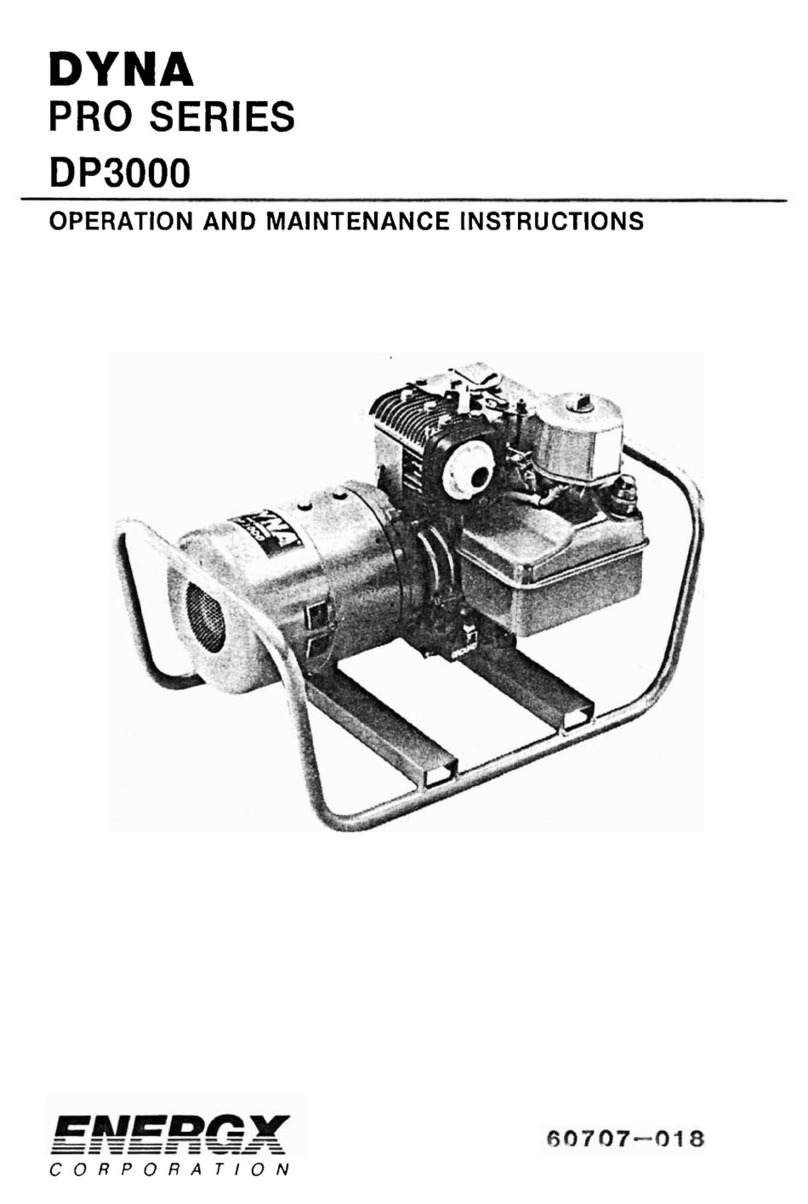
Energx
Energx DYNA DP3000 Operation and maintenance instructions
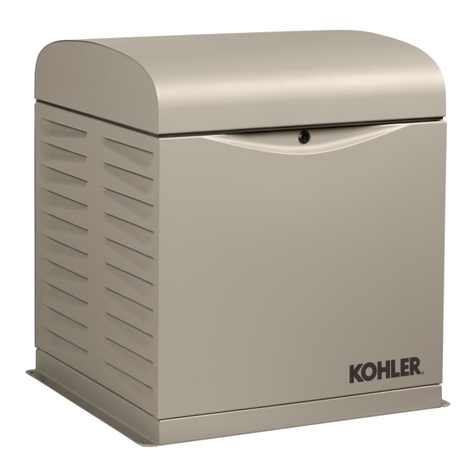
Kohler
Kohler 8RESV Service manual
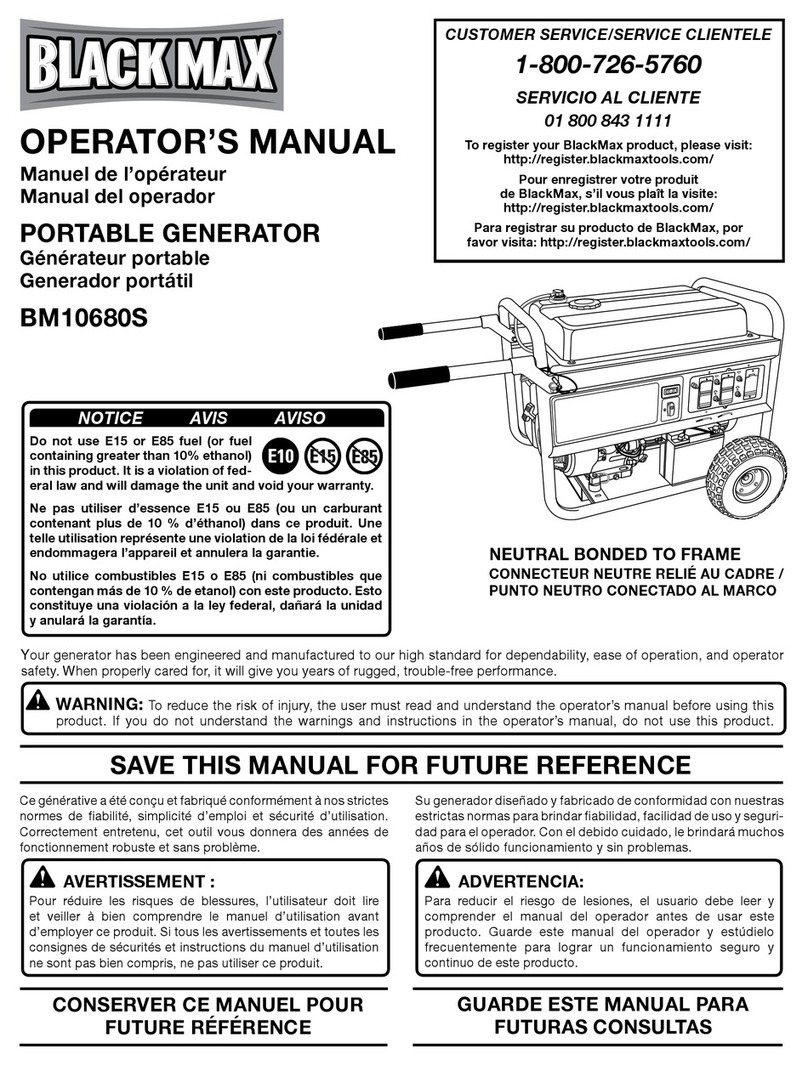
Black Max
Black Max BM10680S Operator's manual

Shindaiwa
Shindaiwa DG37MK-P Owner's and operator's manual

DeVillbiss Air Power Company
DeVillbiss Air Power Company PowerBack A04669 Operator's manual
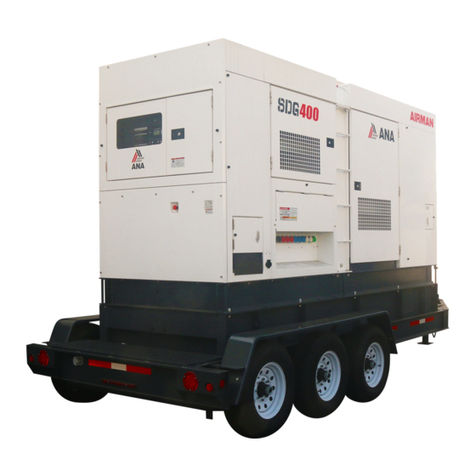
AirMan
AirMan SG Series instruction manual
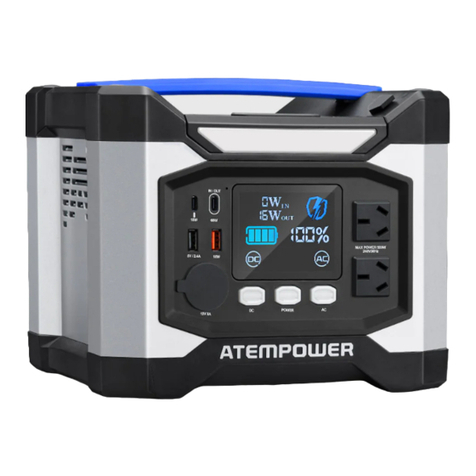
ATEMPOWER
ATEMPOWER AP500X user manual

HSS Hire
HSS Hire 625W Operating and safety guide

Homelite
Homelite UT905700 series Operator's manual
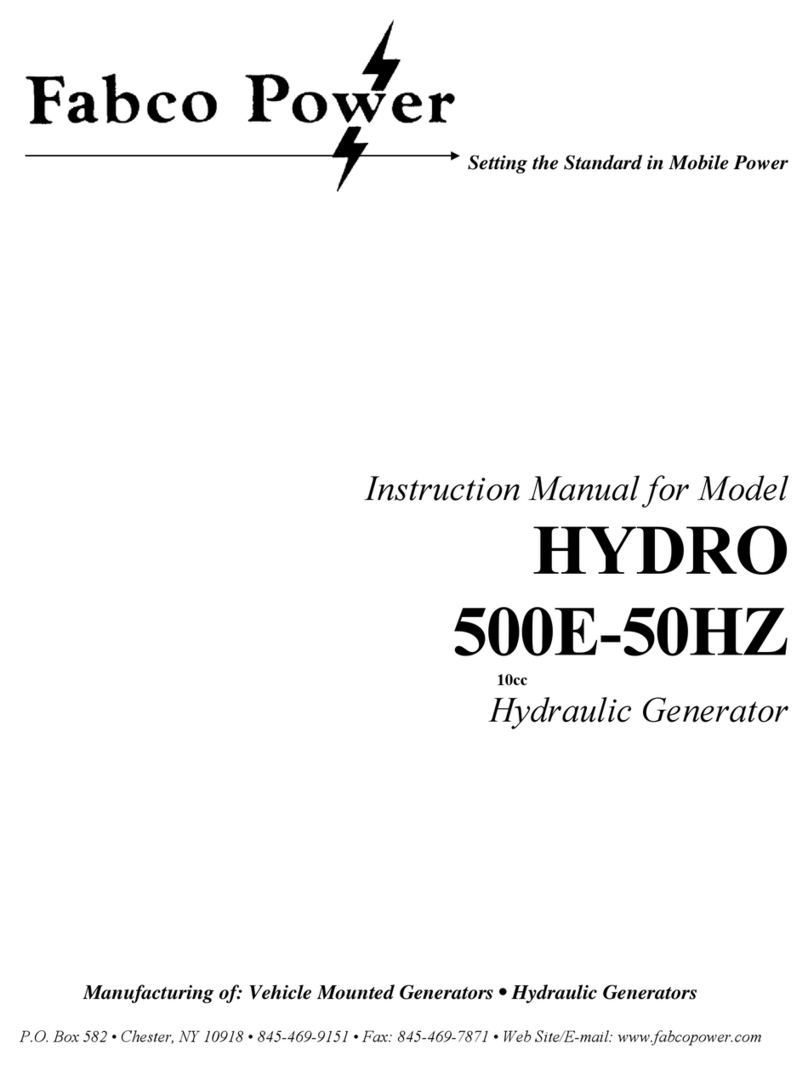
Fabco Power
Fabco Power HYDRO 500E-50HZ instruction manual
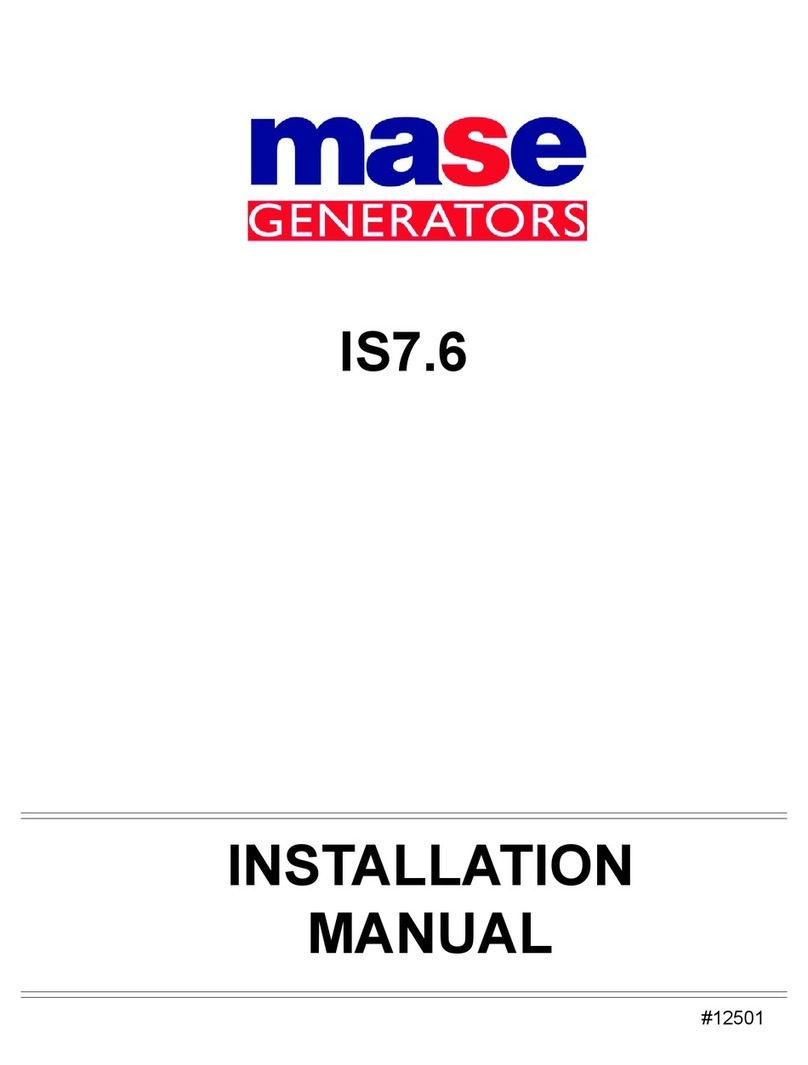
Mase Generators
Mase Generators IS 7.6 installation manual
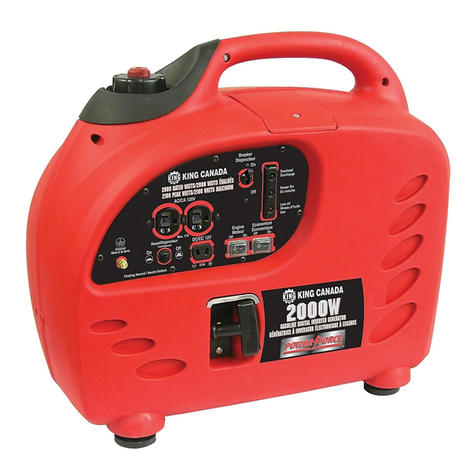
King Canada
King Canada KCG-2000i instruction manual
